How to Grow Marijuana in a Greenhouse
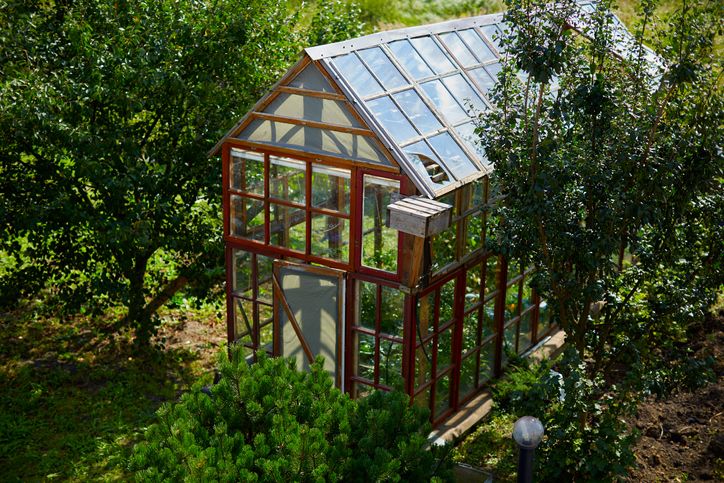
Now that legalization is making its way across the world, there are a lot more people who are now considering their options for how to grow weed at home. In Canada, it is now legal to possess up to 4 pot plants per household without fear of legal repercussions, so our beautiful plants no longer have to be hidden from the prying eyes of nosy neighbors.
Though the weed plant is known for its durability and ability to thrive in less than ideal conditions, that doesn’t mean that you can or should try to grow a marijuana plant just anywhere. You might have some luck with a hearty harvest one year but lose the entire crop the next, thanks to good old mother nature.
Since it has long been common knowledge that black market dealers have been growing their crops alongside farmers corn and bushes for years, it might seem strange to make such cozy accommodations for your maturing marijuana plant, but there are more than a few good reasons why you might want to consider investing in a greenhouse.
Benefits of using a marijuana greenhouse
Every master grower will have their own way of doing things, some swear by grow tents and windowsills, while others prefer a more controllable and contained environment. Though there is no best way to grow cannabis, there are some safer and more efficient ways to produce a hearty yield with the least amount of risk. Here are just a few of the benefits that can come from using a greenhouse to house your precious marijuana plant all year long.
1. Heat
The marijuana plant is a common sight in cooler regions these days, but that was not always the case. Most of the oldest original landrace strains hail from countries with a warmer than average climate. Though marijuana might still grow in areas like Canada with a shorter growing season, the time you have to work with is unforgiving and limited. With a greenhouse, you can provide the warm temperatures that every weed plant craves all year long.
2. Humidity
This species thrives in hot, humid areas thanks to the boost that the thin layer of water provides to a marijuana plant. A healthy level of humidity allows for a better rate of photosynthesis, which is a process that plant uses to turn natural elements and nutrients into food. A greenhouse can help to maintain ideal humidity levels by placing a small container of water in the same area as the weed plant. The extreme heat will then work to evaporate the liquid, turning it into a thick cloud of perfect moisture for your weed plant.
3. Moisture
Not to be confused with humidity, which is in the air, but soil moisture is almost as critical to the development of your marijuana plant. It can be a challenge, particularly for traveling entrepreneurs to be home often enough to water their weed plant, which can lead to a disappointment, returning home to a shriveled up and dead or dying marijuana plant. A sealed greenhouse can help to prevent this and allow for a reduction in the frequency of water needed by up to 70%. So, if you would like to go on vacation, or travel a lot for work, then a greenhouse might be your best choice.
4. Pests
Cannabis plant terpenes are excellent for protection from vicious bugs and other pests that like to eat or reproduce on sweeter tasting plant species. Though the weed plant has a pungent smell that manages to keep many away, the rest enjoy munching on the leaves for their sweet and highly nutritious oils. It can be challenging to protect your plants both indoors and outdoors from pests, as they are most commonly found on your typical house plant. A greenhouse can help to protect your weed plant by sealing out the pesky critters so that they never gain access to its delicious juices.
5. Disease
Most people do not view the marijuana plant in the same way as they do other species, but the truth is that greenery is just as susceptible to disease as any other living thing. A greenhouse can help to protect your weed plant from dangerous and often fatal diseases and illness and can also make it easier to treat your plants if they do happen to catch something contagious.
6. Expand whenever necessary
One of the biggest downsides to growing indoors or using grow tents is that you are limited to a very specific size that often cannot be stretched to accommodate an extra marijuana plant. However, with a few more panes of glass, or the initial investment into an expanding model, a greenhouse can be made into any size that you could ever want or need along the way.
7. Protection from the harsher elements
Whether it’s strong winds, rain, hail, frost or any other naturally occurring environmental conditions that could damage your marijuana plant, these risks are all present when a weed plant is left alone in nature. Though this species is resilient, and many types of marijuana are known for their short, thick, and robust features that are meant to withstand such a beating, one broken stem could cost you all your hard work. You may not be able to control the weather, but the addition of a greenhouse can offer an unbeatable layer of protection against all these dangers and more, which can help growers that are cultivating the more delicate cannabis strains.
8. Maximize the potential of the natural UV rays from the sun to save on hydro
Too many windows in a home can make it difficult to cool, and annoying for homeowners who need to seek out curtains to cover them all, which is the reason why grow lights are almost always necessary for growing marijuana indoors. For the most part, the glare from the sun is something that people try to keep out, which can increase the cost of your initial investment, along with maintenance and utility bills. A greenhouse doesn’t require electricity, or even running water to create the ideal environment for your weed plant to thrive.
9. Less theft
If you can bring a weed plant to full maturity outdoors, then you will be running the risk of having it stolen. Since many people rent or do not have the additional space to dedicate to the task, most are left with few other options. Luckily greenhouses, even the smallest versions, can be cemented into the ground and locked which can help to keep your marijuana plant both safe and secure.
10. Higher rates of success
The benefits of using a greenhouse extend beyond being useful for those that are just learning how to grow weed as the addition can make a significant difference in the amount of maintenance a crop requires, how big the buds on your weed plant get, and ultimately, how substantial of a yield the growing season provides. This is the reason why it is highly recommended to use this method whenever possible, over other more common grow boxes that remain exposed and susceptible to attack from all of the things that are listed here and more.
How to start a marijuana greenhouse
Before you get anything going you will need to assess the amount of space that you have to work within, and determine how far away the ideal plot is from any power source, as both will significantly impact the number of options that you have available moving forward. From there you can decide which features are most important before starting on a design for your marijuana greenhouse.
How to design a marijuana greenhouse
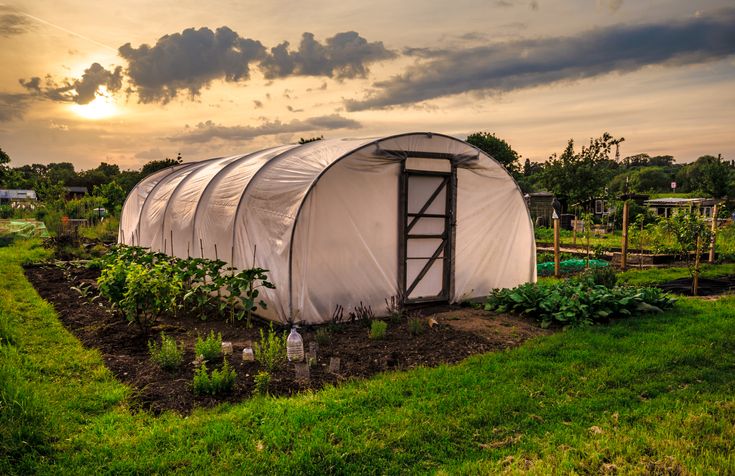
Designing a marijuana greenhouse is a challenge that every grower will tackle differently, but there are a few basics that every single one needs to account for while drawing up plans for a future outdoor grow.
1. Shell materials
A marijuana greenhouse can be made out of glass or plastic sheets, but some will allow through more lighting than others, and materials like glass are heavy, so it’s is important to thoroughly research the cost and effectiveness of all options available that can be incorporated into the design.
2. Shelving
Whether you need somewhere inside to store your tools and nutrients, or you just need to keep plants propped up from the floors, every marijuana greenhouse should be designed with plenty of shelving available for a variety of uses. This will help to keep your plants warmer, and you more organized.
3. Seating room
Not every marijuana greenhouse needs ample seating, but if you want it to work as a functional space to host friends, or you want to be comfortable while tending to your plants, then at least a couple of seats should be included in your design plan.
4. Space per marijuana plant
Some methods of trimming and growing allow for smaller amounts of room, but the general rule is that you should always have at least 4 square feet to dedicate to each marijuana plant that you will have at any given time. So be sure to check and double-check your measurements against these recommendations as you work on your design.
5. Germination space
Marijuana seeds don’t need the same kind of environment to germinate, in fact, they prefer less light during those first few precious hours of life, so it’s always a great idea to include an area into your design that will help to make germinating an easier task.
How to build a marijuana greenhouse
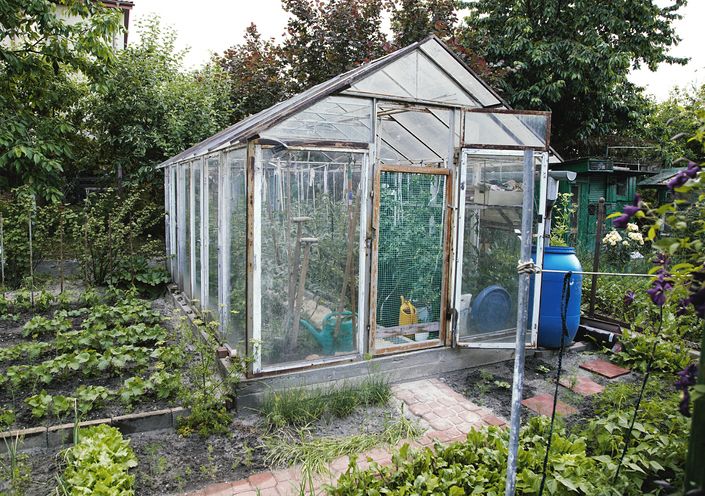
There are many different ways that you could build your own marijuana greenhouse, but the simplest by far is by building a frame using PVC pipe and then covering it in a thick blanket of polyethylene to seal everything in. It is strong enough to support a door that is outlined with ½ wood slats and works well enough to magnify the sun’s natural rays. This kind of structure typically runs just under $300, but it’s not a great long-term solution, as they only have a life expectancy of 2-3 years at most.
If you do decide to try one out for yourself, then be sure to swing by the hardware store to grab a shovel and slip-resistant tape as well as the items mentioned above, so that you can bury the frame tips in the ground for support, and wrap the corners of the pipe before it is wrapped in the plastic to reduce friction, rips or tears.
How to setup a greenhouse to grow marijuana
If you already have an empty greenhouse or have built your own, then you can skip over the building and most of the design aspects, but there are still a few things that you will need to do to get it ready to supply your marijuana plant with everything that it could ever need.
1. Sterilize
A lot of first-time cultivators skip this step, but if the greenhouse in question has ever been used, then it is absolutely necessary to sterilize every square inch to avoid introducing contaminants and possible diseases to your crop.
2. Seal everything
Once you are sitting back and taking in the glory of your nearly ready marijuana greenhouse, the best next step is to seal up any gaps. Even prefabricated greenhouses tend to come with leaks that will significantly impact the climate inside of it, especially during the cooler seasons. To avoid any potential troubles while the whole space is empty, go around with some silicone to seal up any small drafts.
3. Install exhaust
It may seem counter-intuitive to install a device that will allow air into the space that you just put work into sealing, but there is a method to this madness. A marijuana plant needs plenty of CO2 to thrive, a toxin that it will quickly run out of if kept completely away from the outside world. It will also help you to have some control over the humidity levels and temperatures, so it’s a good idea to get an exhaust system installed now.
4. Temperature gauge
Every marijuana greenhouse should have a temperature gauge so that you can detect any potential problems long before they impact your crop, so make sure to get a sensitive temperature and humidity gauge that you can depend on.
5. Shelves
Last but not least is the skeleton of your marijuana greenhouse, which is essentially the parts that bring everything together while holding a bulk of the weight. Technically you could put your cannabis plants on the floor, but that would make them difficult to visually assess comfortably and put them at a higher risk of chill. Since heat rises, it’s a good idea to build or install shelves that will keep your plants at least 3 feet off the ground.
Materials needed to grow a plant in a marijuana greenhouse
- Nutrient-rich soil (or hydroponic set up)
- Pots
- Cannabis seeds or seedlings
- Water
- Nutrients (optional)
Atmosphere and cultivation requirements
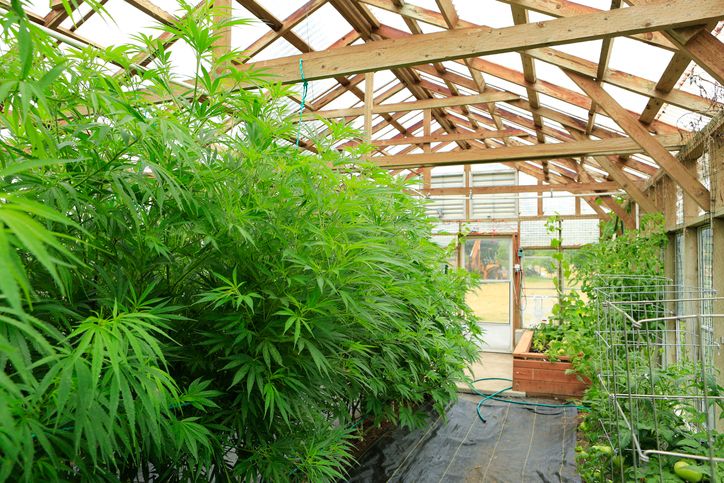
Mediums
The best growing medium to use in a marijuana greenhouse is a living soil that is full of nutrients but doesn’t introduce excellent levels of moisture to the environment. Though you can grow hydroponically in a greenhouse, it is much riskier to do so.
Warmth
Your marijuana greenhouse will be naturally warm when the sun is shining, but it’s a good idea to take temperature readings during the day and night to know for sure whether it is self-sustaining or not. Some greenhouses can stay between the recommended 20°C-30°C alone, but many will need a bit of assistance, especially at nighttime as the temperature drops and the naturally warming sun disappears. If the temperature in your marijuana greenhouse isn’t always warm enough, then you may need to install a heater so that you’ll have control over the situation.
Light
Light fixtures typically aren’t necessary for a marijuana greenhouse as long as it is placed in an area where it receives full day sun, but if the light access is lacking, then you might want to consider investing in some energy-efficient LED’s to provide an additional boost of essential nutrients to your marijuana plant.
Water
Water of some type should always be accessible in a marijuana greenhouse, and access to a fresh flow of it is the absolute best way. It can take 24 hours of water resting for the chemicals to evaporate enough to be safe to use on your plants and carting big jugs back and forth from the house is going to make it icy and shocking to the plants. A rain barrel equipped with a small water heater outside connected to a tap inside is an excellent cost-effective solution.
Humidity
The optimal humidity level for clones is as high as 70%, but for seedlings and more mature plants, a range of 40%-50% is most recommended. If you find that your marijuana greenhouse is lacking in humidity, then a good way to solve that is by storing a jug of water inside and misting plants regularly during the warmest part of the day. For those with too much, a good exhaust system should do the job.
Nutrients
Liquid nutrients are completely optional, but they can offer a wide range of benefits for greenhouse-grown marijuana, and since problems can arise in an instant, it’s always safest to keep them on hand in case you run into trouble. For those that prefer an organic crop, a mixture of all-natural nutrient solution should always be ready to add to your regular watering.
How much room for plants in a marijuana greenhouse?
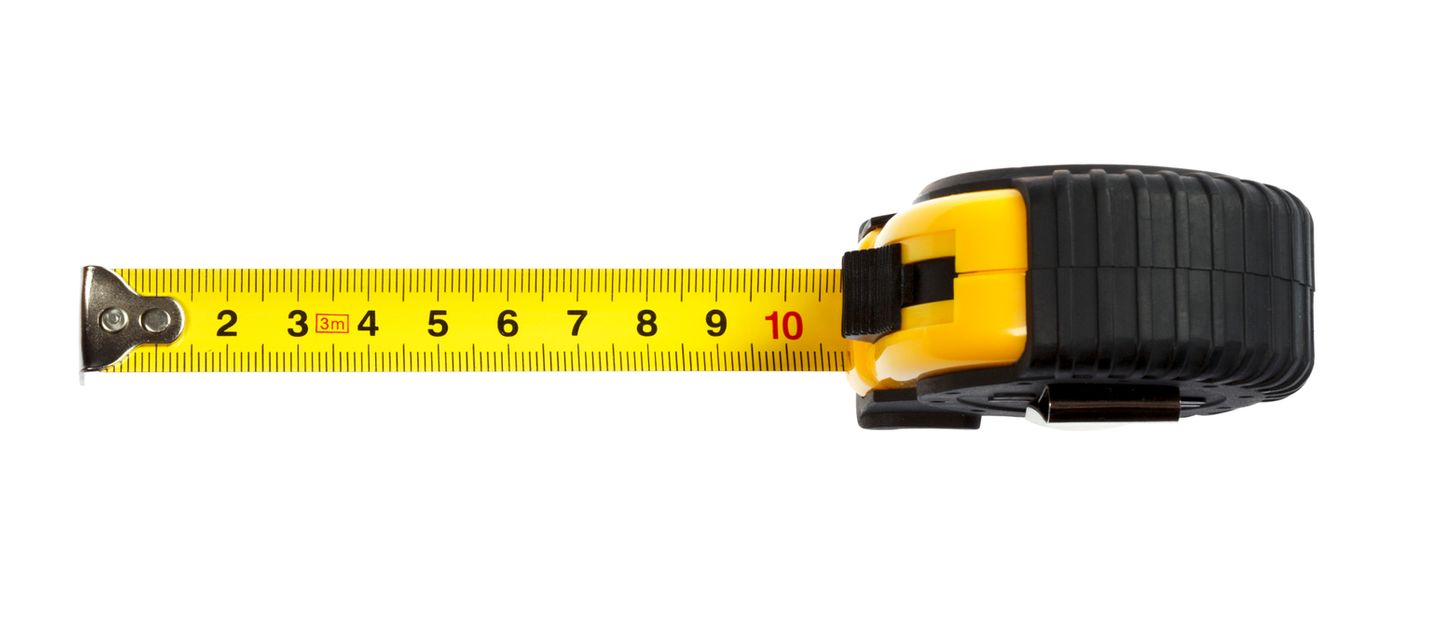
If you are building a small greenhouse that will only house one plant, then you might be able to get away with a small few square foot space, but if you are looking to build a marijuana greenhouse that will house 4-6 plants, a minimum of 10-feet high by 12-feet long by 12-feet wide is most recommended, as a marijuana plant can easily jump past 6 feet tall when left to be naturally bloom.


